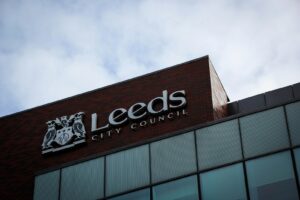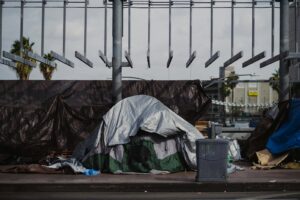Following analysis of their impact on the community, three Low Traffic Neighbourhood (LTN) schemes are to be retained in Bounds Green, St Ann’s and Bruce Grove West Green.
The decision was made following the publication of the final, independently produced monitoring reports, which incorporates data from traffic counts undertaken in November 2023, a year after they were installed. The LTNs were launched as part of Haringey Council’s ‘Streets for People’ programme, aimed at cutting road traffic and improving the walkability and cyclability of local areas by developing active travel corridors.
Research from the report showed that traffic within the schemes had fallen by 58%, leading to an average increase in traffic on boundary roads of just 3%.
Overall, 80,000 fewer vehicles were counted per day while collisions were noted to have fallen by 34% within the LTNs, and also reduced on the boundary roads. However, these efforts didn’t help pollution as no improvement in air quality has been seen.
A breakdown of how the LTNs affected the three areas can be seen below:
St. Anns: All locations in the St. Anns LTN experienced an average NO2 increase 1.5% since implementation (based on 12 months of data). Overall, the concentration of NO2 increased by 1.5% for the sites in the LTN scheme area and by 8% for sites elsewhere in the Borough.
Bounds Green: Across internal roads, NO2 concentration increased by 12%, while there was an 8% increase observed at borough-wide level. Across boundary roads in the LTN scheme area, NO2 concentration increased by 12% while borough-wide monitors showed a 10% increase. The overall concentration of NO2 in Bounds Green increased by 9% for the sites in the LTN scheme area and by 8% for sites elsewhere in the Borough
Bruce Grove West Green: Overall, the concentration of NO2 increased by 2% for the sites in the LTN scheme area and by 5% for sites elsewhere in the Borough. This is broken down into a decrease of 4% for LTN internal roads compared to an increase of 4% for similar urban background locations across the wider Borough – and an increase of 8% on LTN boundary roads compared to an increase of 5% on similar roads elsewhere in the Borough.
Cllr Mike Hakata, Cabinet Member for Climate Action, Environment and Transport, said: ‘The massive reduction in motor traffic is compelling evidence these trials are delivering on their major objective of making it easier and safer for people to walk, wheel, scoot and shop locally.
‘The schemes are creating better streets for people, but there is more we can do. Boundary road traffic levels are generally falling back toward pre-LTN levels, but we know there are hotspots that need dealing with. A comprehensive programme of improvements is underway, including better bus priority, enhanced pedestrian crossings, more protected cycle lanes and measures to reduce congestion.
‘We’ve created the Haringey Climate Partnership too – a collaborative forum with residents and communities to drive action on pollution and emissions.
‘We want this to be a just transition, with LTNs that are fair. We know that different people have different needs which is why we’ve listened carefully to feedback from residents, introduced one of the most extensive exemption schemes and made changes in direct response to feedback. We’ve worked closely with our disabled community and other local communities to review and refine our exemptions – and we will continue to do so to make sure our schemes are fair and effective.
‘When we create shared spaces that prioritise people, communities thrive. This is our opportunity to demonstrate that Haringey is committed to creating a borough that works for everyone – not just for the next few years, but for generations to come. The decisions we make today shape the borough our children, grandchildren, and great-grandchildren will inherit.’
In related news:
Good tidings we bring: Brits plan to give more this Christmas

















Leave a Reply